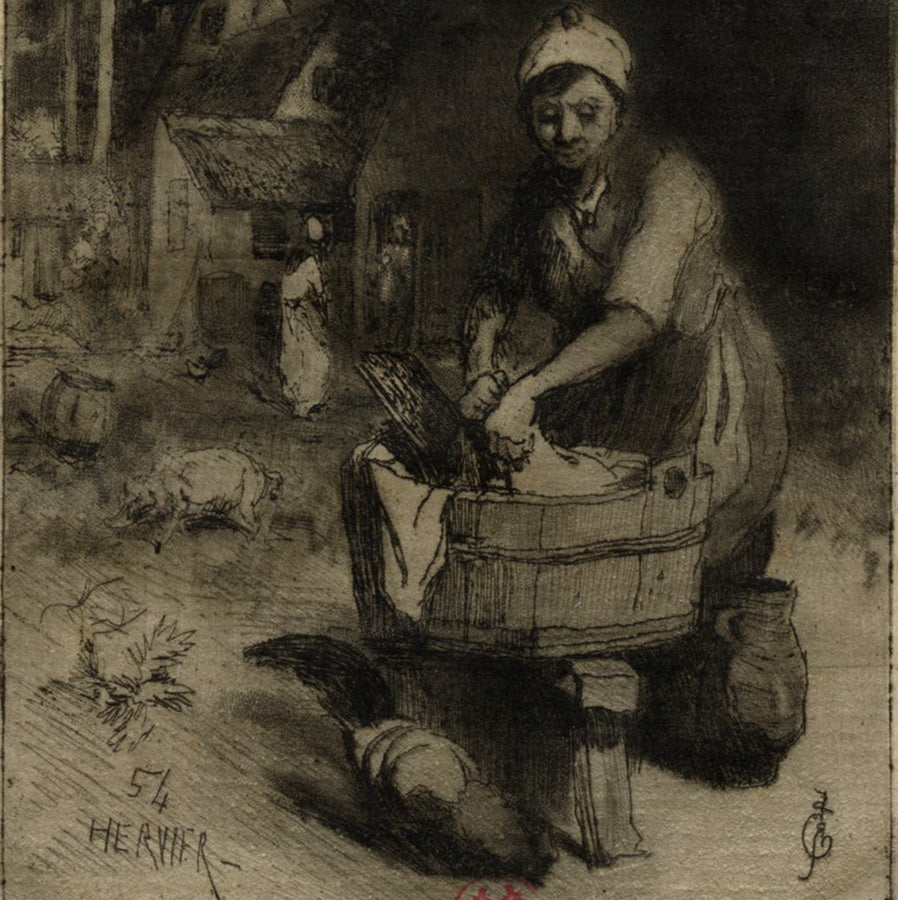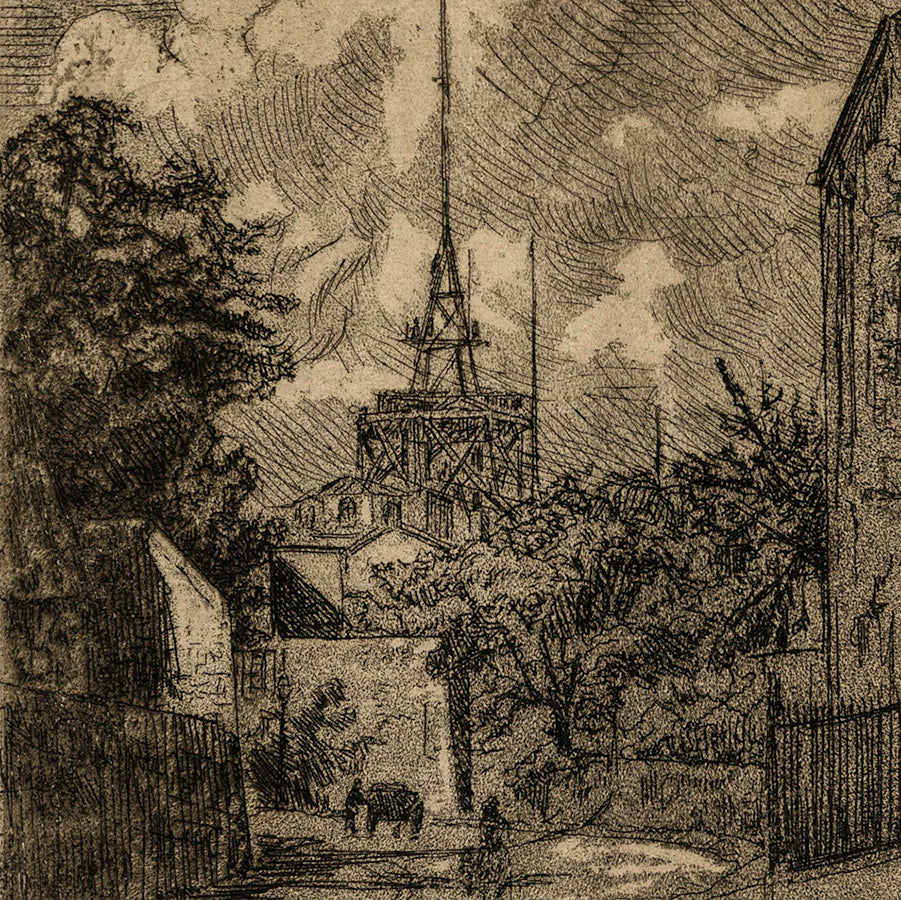
Femme Lavant dans un Baquet
HERVIER, Adolphe
Etching and aquatint on laid Arches paper. References: Beraldi 35; BN-IFF 79.The Bibliothèque Nationale mentions the existence of two states. Scar...
View full detailsWhile printmakers have always wanted to present some shading or grayscale in their work, until the discovery of aquatint in the 17th century, doing so was technically very challenging. And with a few notable exceptions, such as in the etchings of Francisco Goya, aquatint, this most painterly of intaglio techniques, remained unpracticed by most printmakers. Aquatint started to gain popularity in the latter part of the 19th century, likely as etching was being rediscovered by Impressionists. These artists were often eager to replicate in their prints the atmospheric qualities found in their paintings. Aquatint, with its granular texture, lends itself to effects that offer an endless range of shading, both in black and white and in color. Because it was practiced so masterfully by artists of the Modern Era, we here at Armstrong Fine Art are true “suckers” for a finely crafted aquatint. Here are a few we have, or have had in the past.

Etching and aquatint on laid Arches paper. References: Beraldi 35; BN-IFF 79.The Bibliothèque Nationale mentions the existence of two states. Scar...
View full details
Etching and aquatint on wove paper. Likely one of the artist's early etchings, which often depicted "La Butte Montmartre" and its picturesque stre...
View full details
Color aquatint on laid paper, circa 1907. Reference: Merrill Chase 27. Likely an edition of 100. Signed in crayon on the image, and numbered below ...
View full details
Le Potin (original French title) Aquatint and drypoint on wove paper. Reference: Ginestet et Pouillon 96. Undescribed state proof, between the firs...
View full detailsPlease sign up for our newsletter
Email: info@armstrongfineart.com
Phone: 773-887-6776
1200 West 35th Street, #186
Chicago, IL 60609
Copyright © 2025 Armstrong Fine Art.
Development by Alo Agency. Powered by Shopify
